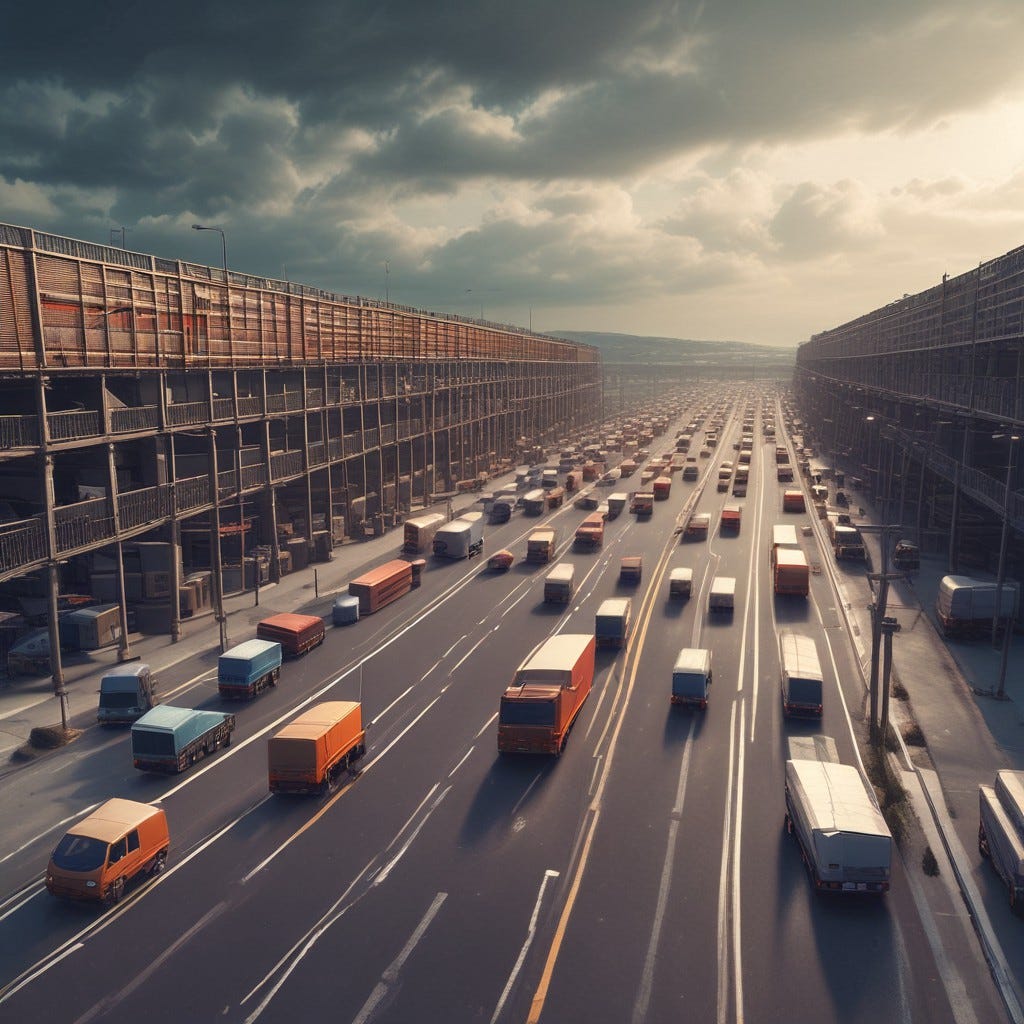- Netomate
- Posts
- What AI Infrastructure Really Looks Like (A Friendly Breakdown)
What AI Infrastructure Really Looks Like (A Friendly Breakdown)
A practical breakdown of compute, storage, and networking that power today’s intelligence systems.
Let's understand AI infrastructure in very simple way ,not in buzzwords, but in real- world terms. Imagine you are running a Amazon Delivery service.

You have got big warehouse, drivers and a road connecting to all destinations.
🧠 Compute: The Brains — or the Drivers on the Road
Compute layer is like team of drivers ground around, moving packages (data) from Point A to Point Z.
CPU are all purpose vans -- they can handle anything but aren't used for speed delivery.
GPU are the specialized trucks that carry huge volume fast -- Built for heavy duty tasks lets say like training neural network
RAM That is essential part that every driver need like dashbaoard in front of hime
NICs Think of its like high-speed lanes of tunnels that helps you bypass traffic and get to destination faster
Why the love with GPUs lately? Because AI training isn’t normal — it’s like moving large chunk of data around.
GPUs are wired to handle that kind of workload efficiently, with thousands of cores working in parallel.
Some systems stack up 8, 16, even more GPUs in a single server — all linked with ultra-fast NICs pushing speeds up to 800 Gbps.
That’s not a typo. We're talking about transferring entire libraries worth of data in the blink of an eye.
📦 Storage: Your Warehouse System
Now, where do all those packages come from? Right — the warehouse.
In AI, storage plays that role. But it’s not just about capacity. It’s about speed. If your drivers are sitting around waiting for boxes to load, your whole system slows down.
SSDs are the fast-loading bays — perfect for handling large datasets quickly.
InfiniBand with RDMA? It’s like teleporting data straight to the truck, skipping the harder task. (in our case the CPU). Again this itself is very big topic and will love to come with post specfically to InfiniBand with RDMA.
IP-based storage is more plug-and-play. Maybe not the fastest, but it works well with what most systems already have.
And distributed storage spreads data out, so there's no single point of failure. It's like having multiple warehouses stocked with the same inventory — so if one goes down, another picks it up.
🌐 Networking: The Road System That Connects It All
Networking is the glue. Or, sticking everything together, it's the actual road system your fleet depends on.
Most AI data centers use something called spine-leaf architecture:
Leaf switches connect directly to compute nodes — the endpoints.
Spine switches tie everything together, making sure data can flow across the entire network without bottlenecks.
If that sounds technical, think of it like this: it's a carefully designed freeway system with enough lanes to handle rush hour — or in this case, petabytes of data moving in real time.
And to keep things moving? Engineers tweak the subscription ratio — the balance between how many compute nodes share bandwidth and how much is actually available. Get it wrong, and things slow down. Get it right, and data moves so efficiently it barely feels like it’s traveling at all.
🔧 When Everything Clicks
Put all of this together — compute that’s optimized, storage that’s fast and accessible, and networking that keeps things flowing — and you’ve got an AI infrastructure that can scale to almost anything.
That’s what powers:
It’s not about any one component. It’s how they all work together.
Smiles :)
Anurudh
Reply